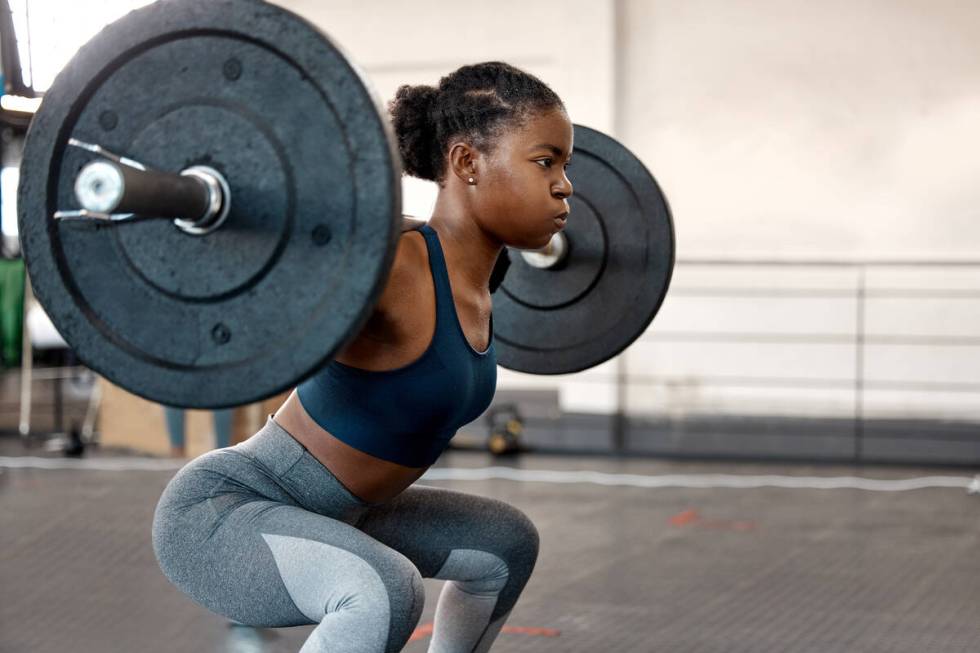3 keys to unlocking strength in your lower body

Effective exercises for a well-rounded strengthening routine for your lower body should include variations of squats, hip hinge drills, such as deadlifts, and lunges.
Exercises using these movement patterns are ideal for enhancing strength not just in the lower body but overall.
Drills that improve lower leg mobility and stability should not be ignored. The lower leg is a linchpin for lower-body exercises and by including a few drills for this commonly forgotten area, you can make traditional movements, such as squats, more productive and possibly pain-free.
It starts with the foot: Your direct connection to the ground starts with the foot. It has 29 muscles. Ten of them start outside of the foot, but cross the ankle joint to act on the foot. Nineteen originate in the foot and are intrinsic foot muscles.
These muscles provide the necessary support for the foot and act as primary movers for the toes. Like all muscles, they can become deconditioned from lack of use or injury.
Awareness of the benefits of stability within the foot has prompted the popularity of barefoot training and minimalist shoes. A straightforward way to improve the strength of the foot is to walk around the house barefoot. For safety, avoid walking on slippery surfaces. When starting out, limit the time to five minutes of walking barefoot and gradually add time weekly. This approach helps avoid doing too much too fast.
Before starting exercises for your feet, you should address the tissue quality of the plantar area, or bottom of the foot. You can do this by using a tennis ball and gently rolling it across the bottom of the foot for three to five minutes. You want to roll the heel, arch and ball of the foot.
If the tennis ball is too intense, you can also use a frozen water bottle, which can help soothe pain and inflammation of the foot.
The ankle needs to be mobile: To squat and lunge pain-free, you need good movement quality within the ankle joint.
Ankle joint mobility can be negatively affected from past minor injuries such as sprains or strains. The trauma experienced can limit the movement of this valuable joint leading to compensation for one’s gait.
An easy way to regain lost range of motion is by performing controlled articular rotations, or circles, with the foot. To do this, sit in a chair or on the floor. Focus on one ankle at a time.
Brace and hold the shin to ensure that all the movement comes through the ankle joint. Draw the big toe up as close as possible toward the shin, keeping the heel on the ground. Then using a clock as a reference, move the toes from the starting position of 12 o’clock to 3, then 6, then 9 and back to 12.
Complete three repetitions clockwise, then three repetitions counterclockwise.
Stretch your calves: The muscles of the lower leg are complex. Compared with the larger muscles of the thigh and hips they are smaller but very dense.
The accepted normal range of motion for ankle dorsiflexion is 20 degrees. This means that while standing upright with the hips extended and straight legs, your foot should be able to move upward toward the shin by about 20 degrees.
Research that has shown that diminished dorsiflexion in female athletes during landing from jumping carries an increased the risk of anterior cruciate ligament injury.
Static stretching of the calves is a simple way to maintain and improve ankle mobility. There are slant boards that allow you to perform this stretch, but if you don’t have access to this equipment, simply standing on a step allowing the heels to drop into dorsiflexion and holding that is sufficient.
Avoid bouncing, breathe throughout the stretch, and hold for 15 to 30 seconds. Perform three repetitions on each leg.
You are sure to improve the efficiency of your lower-body workouts by addressing the stability of your foot and the mobility of the ankle. Add these drills to your exercise regimen two to three days a week to see improvements in your lower-body training.
Doug Sheppard is a certified personal trainer with 33 years of experience and owner of J&D Fitness Personal Training Studio in Las Vegas.